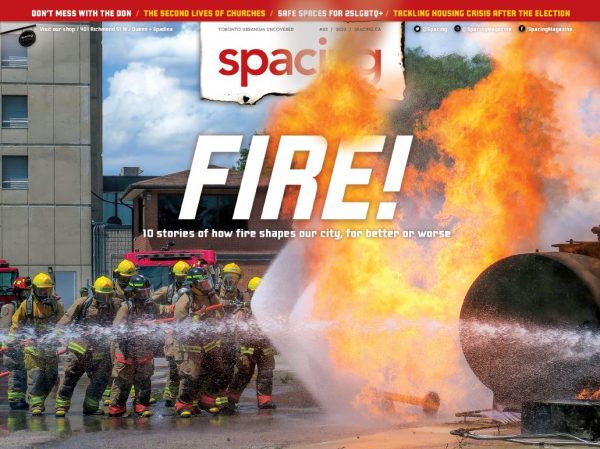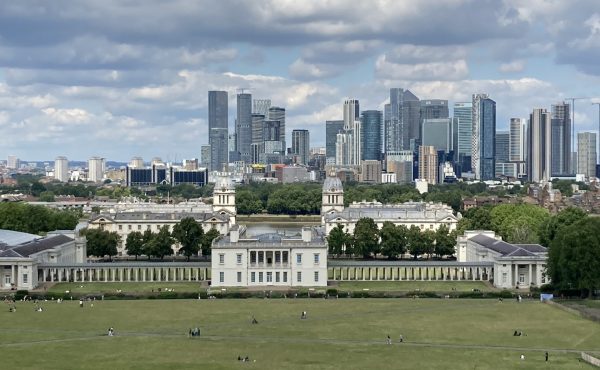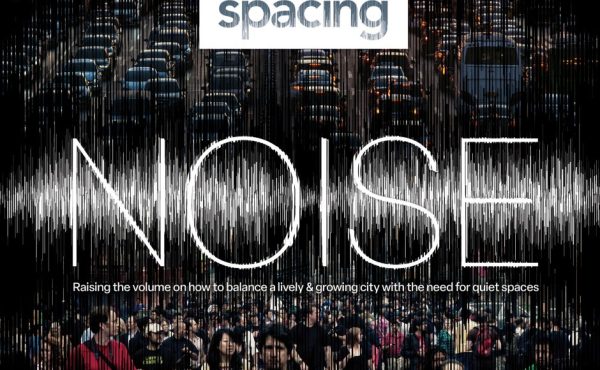Our city is built around fire, for better or for worse. The heat provided by fire made it possible establish a city in a cold climate. Burning fuel powered our industry. Scorching kilns processed the bricks and concrete that provided our walls.
Our streets and alleys are made wide because they are required to host massive fire trucks when needed, while easing the way for all the motor vehicles that transport much of our population and our goods via internal combustion engines. Our buildings are shaped by the need to make them safe from flames.
All that fire has consequences. It’s not just the flames that have escaped their boundaries to destroy buildings and kill people throughout our city’s history. For a century, the ash from burning the coal that kept houses warm and factories humming also blackened our buildings and damaged our lungs. Making those bricks and that concrete, and moving those fuel-burning vehicles, spews pollution and greenhouse gases. Little did we know, for most of the city’s history, that as we heated our homes, we were also heating up the planet.
Fire is elemental. Like the rain that we featured in an issue last year, it is necessary and productive, yet also dangerous and destructive. Capturing fire was one of the first steps in the evolution of modern humans, but we are still working out how to manage it responsibly.
One example we can look to is the prescribed burns in High Park, featured in this issue by Eric B. Kennedy. Following in the footsteps of Ontario’s Indigenous peoples, that program uses the power of fire while carefully respecting and controlling its destructive potential and the side effects it creates for neighbours.
It’s one instance of how we can learn to manage fire. In another, the city once discouraged building with wood, because it was blamed for the great fires of the city’s first century. But now we are once again starting to build ever larger buildings around mass timber, because we’ve learned how to do it so that it resists, rather than fuels, flames.
And we are reducing our dependence on fire. In the face of global warming, we are looking to the other elements – air (wind), earth (geothermal), and water (hydro) – along with that primary but distant fire, the sun, to replace the power and the dangerous side effects created by burning fossil fuels.
But there is more to fire than just utility and danger. Fire is mesmerizing. When I lived in the Garment District, back in 2008, I looked out my window one day and saw heavy smoke billowing close by. Going to investigate, I discovered that a row of lovely heritage buildings on Queen Street West were engulfed in flames. With many others, I was spellbound by the conflagration. It was a horrifying, but also extraordinarily compelling to witness the power of fire in action. Luckily, no-one was killed, and attractive new buildings have replaced those lost, just as Toronto has rebuilt after numerous past fires.
More often, fortunately, the fascination of fire brings people together in good ways. The city’s park fire pits, bake ovens, and barbeques are the focus point of birthday parties and get-togethers of friends, families, and neighbours. Fireworks mark festive occasions. At its best, fire is a source and a marker of joy and community.
We saved the fire theme for our summer issue, when these outdoor fires are most active and the fire of the sun is most present. Many of our front section stories also speak to that intense period of outdoor activities that is the Toronto summer. Rosemary Richings writes about the challenges and benefits for the disabled of the summer’s CafeTO streetside patios. Edith Wilson explores how outdoor spaces like skate parks bring people together. Matt Armstrong looks at how to get to cottage country by transit. I talk to some of the volunteers who go out to take care of the Don Valley during the growing season. And Tatum Taylor Chaubal and Wesley Lincoln Reibeling look at the importance of safe spaces such as Hanlan’s Point Beach for the 2SLGBTQ+ community.
The sun is shining, the weather is hot. We hope you find the warmth of community this summer.
The new issue is available at the Spacing Store (401 Richmond St. W., Toronto) and at other fine bookstores and magazine shops.




